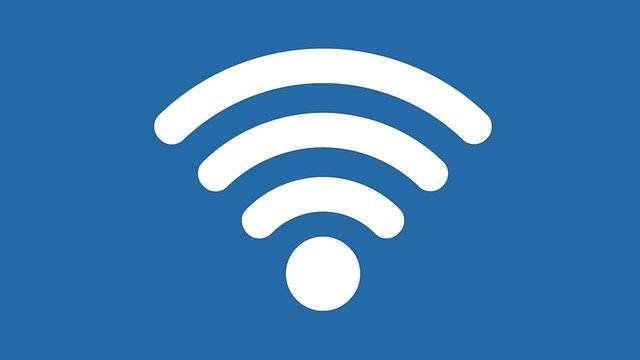Affordable Internet Plans for Seniors: Stay Connected on a Budget
Finding affordable internet options is crucial for seniors who want to stay connected with family, access healthcare resources, and enjoy digital entertainment without straining their finances. With numerous providers offering special discounts and programs specifically designed for older adults, navigating these choices can be overwhelming but ultimately rewarding when the right plan is found.

The internet has become an essential utility for people of all ages, including seniors who increasingly rely on connectivity for everything from video calls with grandchildren to telehealth appointments. However, finding affordable internet service that meets their needs can be challenging, especially for those living on fixed incomes. Fortunately, there are numerous options available specifically designed to help older adults stay connected without financial strain.
How to Find Budget-Friendly Internet Plans for Seniors
Many internet service providers offer special discounts for seniors, though these aren’t always prominently advertised. Start by contacting local providers and specifically asking about senior discounts or programs. Companies like AT&T, Spectrum, and Xfinity sometimes offer reduced rates for customers aged 65 and older. Additionally, some providers partner with senior organizations to offer exclusive deals to members of AARP or similar groups.
Beyond provider-specific discounts, seniors should consider basic internet packages that offer adequate speeds for everyday activities like email, web browsing, and video calls without paying for unnecessary bandwidth. Many providers offer entry-level plans with speeds of 25-50 Mbps, which is typically sufficient for basic online activities.
Understanding High-Speed Internet Options for Seniors
When choosing an internet plan, understanding speed requirements is essential. While premium plans offering 500+ Mbps might sound impressive, most seniors don’t need such high speeds. For basic email and web browsing, 5-10 Mbps may be sufficient. Video calls with family typically require 10-25 Mbps, while streaming services like Netflix recommend at least 5 Mbps for HD content.
Before selecting a plan, seniors should assess their internet usage habits. Do they mainly check email and read news articles? Or do they regularly stream movies, participate in video calls with family, or use telehealth services? This assessment helps determine the appropriate speed tier and avoid overpaying for unnecessary bandwidth.
Government Programs and Financial Assistance for Internet Access
Several government programs help make internet service more affordable for seniors and low-income households. The Affordable Connectivity Program (ACP), which replaced the Emergency Broadband Benefit, provides eligible households with a discount of up to $30 per month toward internet service (and up to $75 per month for households on qualifying Tribal lands).
Lifeline is another federal program that offers a discount of up to $9.25 per month on either phone or internet service for eligible low-income subscribers. Seniors who receive Medicaid, Supplemental Security Income (SSI), or Federal Public Housing Assistance may qualify for these programs.
Additionally, some states and municipalities offer their own internet subsidy programs specifically designed for seniors. Local Area Agencies on Aging can provide information about regional assistance options that might not be widely advertised.
Safety Considerations When Choosing Internet Services
While affordability is important, seniors should also consider safety features when selecting an internet provider. Look for companies that offer security software as part of their packages, including antivirus protection and secure Wi-Fi networks. Some providers include these features at no additional cost, which can be particularly valuable for seniors who may be less familiar with cybersecurity practices.
Password management tools and regular security updates are also important considerations. Some providers offer technical support specifically designed for seniors, with representatives trained to explain concepts clearly and patiently. This support can be invaluable when troubleshooting connection issues or setting up security features.
Comparison of Affordable Internet Plans for Seniors
When comparing internet options, it’s helpful to look at specific plans from major providers that may be suitable for seniors on a budget.
| Provider | Plan Name | Speed | Monthly Cost | Senior Benefits |
|---|---|---|---|---|
| AT&T | Internet Basic | 10 Mbps | $30-35 | Access to ACP discount, no annual contract |
| Spectrum | Internet Assist | 30 Mbps | $17.99-22.99 | No data caps, free modem |
| Xfinity | Internet Essentials | 50 Mbps | $9.95-29.95 | Option for seniors in qualifying programs |
| T-Mobile Home Internet | Standard Plan | 35-115 Mbps | $50 | Fixed pricing, no equipment fees |
| CenturyLink | Simply Unlimited | 20 Mbps | $50 | Price-for-life guarantee |
Prices, rates, or cost estimates mentioned in this article are based on the latest available information but may change over time. Independent research is advised before making financial decisions.
Bundling Services: When It Makes Sense for Seniors
Many providers offer bundled services that combine internet with cable TV or phone service. While bundles can sometimes save money, they’re not always the most economical choice for seniors with minimal needs. Before committing to a bundle, seniors should evaluate whether they actually use all the included services.
For example, a senior who rarely watches television might save money with a standalone internet plan and a streaming service subscription rather than paying for a full cable TV and internet bundle. Conversely, those who enjoy watching numerous channels might find value in a comprehensive bundle.
Some providers offer special senior-focused bundles that include features like large-button remotes or simplified interfaces. These packages may cost slightly more but provide additional value through accessibility features designed specifically for older adults.
The internet landscape continues to evolve, with new options regularly becoming available for budget-conscious seniors. By researching provider-specific discounts, government assistance programs, and right-sized plans that match their actual usage needs, seniors can find affordable ways to stay connected in our increasingly digital world. Taking the time to compare options and inquire about unadvertised specials can result in significant savings while maintaining the connectivity that’s become essential for healthcare, social connections, and everyday tasks.




